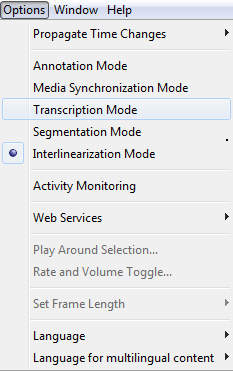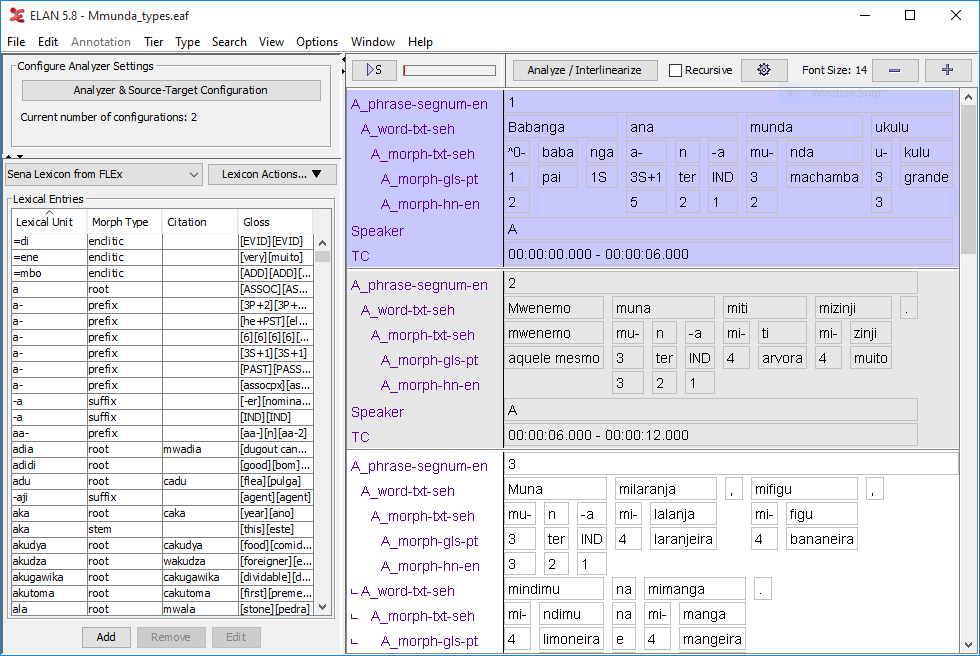Interlinearization mode
Interlinearization mode is a text oriented mode designed for parsing and glossing annotations to one or more lines of interlinearized text. This can be done manually or with the use of one or more so-called Analyzers. The segmentation and (typically) the transcription of speech events need to be done in one or more of the other modes before interlinearization can be added in this mode.
Analyzers are software modules that accept an annotation as input and produce suggestions for one or more annotations, on one or more tiers, as output. Examples of the type of processing analyzers can perform are tokenization, morphological parsing and lookup of glosses. The behavior of some analyzers can be configured in a settings panel. Some analyzers need a connection to a lexicon, others can perform their task based on the input alone. Analyzers are implemented as extensions so that third party users and developers can create and add their own analyzers. At least eventually: the LEXAN API, as it is called, still has to be finalized, documented and published.
Part of the user interface of this mode is a Lexicon panel, the front-end of a Lexicon Component module. It allows to create, import and edit a lexicon and its entries. Lexicons are stored separately from annotation data in a new data format. These are the lexicons that analyzers can get access to.
To start the Interlinearization mode, click from the main window.
Figure 340. Select Interlinearization Mode
 |
The main screen is split in two, the left side containing 2 panels, the right side consisting of a single panel.
Top-left panel: contains a single button which gives access to several configuration windows, both for analyzer settings proper and for configuration of source and target tier types for analyzers.
Bottom-left panel: Lexicon editor. Lexicons may be used by an analyzer and are user-defined.
Right panel: Viewer and editor showing the annotations in an interlinear text style.
Figure 341. Interlinearization mode main view
 |
To start working in Interlinearization Mode, you need to have already set up a tier structure and have to have some segmentations (annotations on a top level tier). The values of annotations can be edited in this mode and annotations on dependent tiers, including subdivisions, can be created, but not primary segmentations on top-level, independent tiers. This can be done in Annotation mode and/or Segmentation mode. It is still possible to add new tier types and tiers in this mode (please refer to the section called “How to define a tier type” and the section called “How to define a tier and its attributes” for more information about tier structures).
If you want to use an analyzer that requires a connection to a lexicon, you should first create or import a lexicon and link one or more tier types to specific fields in a lexical entry (see the section called “Adding new tier types” and the section called “Set the Lexicon Service and entry field information for a Tier Type”).